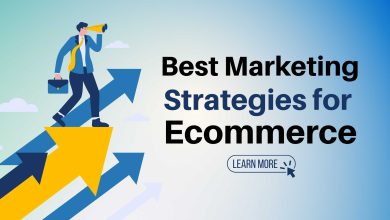How to Make Money With Optimise Comprehensive Guide -2024
How to make money with Optimise : In today’s world, making money online has become a popular way for people to earn an income. One way to do this is through affiliate marketing. In this essay, we will explore how to make money with the Optimise affiliate program, also known as Optimisemedia. We will discuss what the program is, how it works, and strategies to maximize your earnings.
What is Optimise media?
Optimisemedia is an affiliate marketing network that connects advertisers with publishers. Advertisers pay publishers a commission for each sale or lead generated through the publisher’s website. Optimisemedia provides a platform for advertisers to promote their products and services, and for publishers to monetize their website traffic by promoting those products and services.
How does the Optimise affiliate program work?
The Optimise affiliate program is free to join. Once you sign up, you will have access to a wide range of advertisers that you can promote on your website. You can choose the advertisers that are most relevant to your audience and promote their products or services through banners, text links, or product feeds.
Table of Contents
When a visitor clicks on your affiliate link and makes a purchase or completes a lead form, you earn a commission. The commission rate varies depending on the advertiser and the product or service being promoted. Some advertisers pay a percentage of the sale, while others pay a fixed fee per lead.
The Optimise affiliate program provides real-time reporting, which allows you to track your earnings and monitor the performance of your campaigns. You can see which advertisers are generating the most revenue for you and adjust your strategies accordingly.
Strategies for making money with the Optimise affiliate program
- Choose relevant advertisers
To maximize your earnings with the Optimise affiliate program, it’s important to choose advertisers that are relevant to your audience. For example, if you run a fitness blog, you may want to promote fitness products or supplements. If you have a travel website, you may want to promote travel deals or hotels. By promoting products or services that are relevant to your audience, you increase the likelihood of them making a purchase, which means more commissions for you.
- Create compelling content
Compelling content is key to driving traffic to your website and increasing the likelihood of visitors clicking on your affiliate links. This means creating high-quality content that is informative, engaging, and relevant to your audience. The content should be optimized for search engines, which means using relevant keywords and meta tags. By creating compelling content, you can build trust with your audience and increase the likelihood of them making a purchase through your affiliate links.
- Use multiple channels
While your website is the primary channel for promoting affiliate products, it’s important to use multiple channels to reach a wider audience. This includes social media, email marketing, and paid advertising. By promoting affiliate products through multiple channels, you can increase your reach and drive more traffic to your website, which means more commissions.
- Test and optimize
Testing and optimizing your campaigns is important to maximize your earnings with the Optimise affiliate program. This means testing different ad placements, ad formats, and landing pages to see which ones perform best. You can use A/B testing to compare the performance of different campaigns and adjust your strategies accordingly. By constantly testing and optimizing your campaigns, you can improve your conversion rates and increase your earnings.
- Build relationships with advertisers
Building relationships with advertisers is important to maximize your earnings with the Optimise affiliate program. By building a good relationship with advertisers, you can negotiate higher commission rates, get access to exclusive offers, and get early access to new products or services. You can also get valuable insights into the performance of their products or services, which can help you optimize your campaigns.
Also Read … How to Make Money With Shopify Collabs
Scope of Affiliate Marketing
The scope of affiliate marketing is extensive, encompassing various elements across industries and online platforms. Here’s a comprehensive overview of the scope of affiliate marketing:
- Diverse Industries:
- Affiliate marketing is applicable to a wide range of industries, including e-commerce, retail, travel, finance, health, and more. Virtually any sector with online transactions can benefit from affiliate marketing.
- Global Reach:
- With the internet as its platform, affiliate marketing has a global reach. Businesses can collaborate with affiliates from different parts of the world, expanding their market presence and customer base.
- Cost-Effective:
- For merchants, affiliate marketing is a cost-effective advertising strategy as they only pay for actual sales or conversions. This performance-based model is attractive to businesses seeking a measurable return on investment.
- Multiple Compensation Models:
- The scope of affiliate marketing includes various compensation models, such as Pay-Per-Sale (PPS), Pay-Per-Click (PPC), and Pay-Per-Lead (PPL). This flexibility allows businesses to choose a model that aligns with their goals.
- Diverse Affiliate Channels:
- Affiliates can operate through various channels, including blogs, social media, email marketing, influencers, and niche websites. This diversity enables businesses to tap into different audiences and demographics.
- Tracking and Analytics:
- Advanced tracking tools and analytics provide businesses with insights into the performance of their affiliate marketing campaigns. This data allows for continuous optimization to maximize results.
- Relationship Building:
- Affiliate marketing fosters strong relationships between merchants and affiliates. Effective communication and collaboration contribute to mutual success.
- Scalability:
- The scope of affiliate marketing is highly scalable. Businesses can start small and gradually expand their affiliate network as they see positive results.
- Brand Awareness:
- Affiliate marketing can contribute to increased brand awareness as affiliates promote products or services to their audiences. This word-of-mouth marketing can enhance a brand’s visibility.
- SEO Benefits:
- Affiliates often create content to promote products, contributing to improved search engine rankings for the merchant’s website. This indirect SEO benefit can enhance overall online visibility.
- Innovation and Technology:
- The scope of affiliate marketing is continually evolving with advancements in technology. Emerging trends like influencer marketing, mobile optimization, and video content contribute to the innovation within the affiliate marketing landscape.
- Influencer Collaboration:
- Affiliate marketing seamlessly integrates with influencer collaborations. Brands can leverage influencers as affiliates, tapping into their engaged audiences to drive sales.
- Cross-Device Marketing:
- As consumers use various devices to browse and shop online, affiliate marketing accommodates cross-device marketing strategies, ensuring a consistent experience across platforms.
the scope of affiliate marketing is vast, offering businesses a flexible and performance-driven approach to reach a global audience, increase sales, and build meaningful partnerships with affiliates. As technology and consumer behaviors evolve, affiliate marketing continues to adapt, making it a dynamic and enduring marketing strategy.
New Trends in Affiliate Marketing
As of my last knowledge update in January 2022, the landscape of affiliate marketing continues to evolve with emerging trends. Here are some new trends in affiliate marketing that may have gained prominence:
- Influencer Marketing Integration:
- A growing trend involves influencers participating in affiliate marketing programs. Brands collaborate with influencers who, in addition to sponsored content, promote affiliate products to their engaged audiences.
- Video Content Dominance:
- The use of video content in affiliate marketing has surged. Video reviews, tutorials, and demonstrations on platforms like YouTube and TikTok are increasingly effective in driving affiliate sales.
- AI and Machine Learning Optimization:
- Advanced analytics, AI, and machine learning tools are being employed to optimize affiliate marketing campaigns. These technologies help in predicting consumer behavior, refining targeting strategies, and maximizing ROI.
- Mobile-First Approach:
- With the increasing use of mobile devices, affiliate marketers are prioritizing mobile-friendly strategies. This includes optimizing websites, creatives, and tracking for a seamless mobile experience.
- Subscription and Membership Models:
- Some affiliate programs are shifting towards subscription-based and membership models. Affiliates may earn recurring commissions for as long as referred customers remain subscribed.
- Native Advertising:
- Native advertising seamlessly integrates with the platform’s content, providing a more organic and less intrusive way to promote products. This approach is gaining popularity in affiliate marketing.
- Loyalty and Rewards Programs:
- Affiliate programs with loyalty and rewards components are becoming more prevalent. This involves rewarding both customers and affiliates for ongoing engagement and loyalty.
- Dynamic and Personalized Content:
- Personalization is a key focus, with affiliates creating dynamic content tailored to specific audience segments. Personalized recommendations and content enhance user engagement and conversion rates.
- Niche-Specific Affiliates:
- Brands are increasingly working with affiliates who have expertise in specific niches. This targeted approach allows for more authentic and effective promotion within niche communities.
- Cryptocurrency and Blockchain Integration:
- Some affiliate programs are exploring the use of cryptocurrencies and blockchain for transparent and secure transactions. This technology can address issues related to tracking and attribution.
- Social Commerce and Shopping Features:
- Social media platforms are expanding their shopping features, providing new opportunities for affiliate marketers. Features like Instagram Shoppable posts and Pinterest Shopping are being leveraged.
- Voice Search Optimization:
- As voice search becomes more prevalent, affiliates are optimizing content for voice queries. This includes creating content that answers common questions and aligns with conversational search patterns.
- Sustainability and Ethical Marketing:
- There is a growing emphasis on sustainability and ethical marketing. Affiliates promoting eco-friendly products or brands with a strong ethical stance can resonate with conscious consumers.
It’s important to note that the affiliate marketing landscape is dynamic, and new trends may continue to emerge. Staying informed about industry developments and adapting strategies accordingly is crucial for success in affiliate marketing.
Ready Made Digital Store with 100 Products

Disadvantages of affiliate marketing
While affiliate marketing has many advantages, it’s important to be aware of potential disadvantages for both merchants and affiliates. Here are some of the key drawbacks associated with affiliate marketing:
Disadvantages for Merchants:
- Dependence on Affiliates:
- Merchants rely on the efforts of affiliates to promote their products, and if affiliates are not effective or lose interest, it can impact the success of the campaign.
- Risk of Fraud:
- Affiliate marketing is susceptible to fraudulent activities, such as click fraud, where affiliates generate fake clicks to earn undeserved commissions.
- Brand Reputation Concerns:
- Affiliates may not always align with the brand’s values, potentially leading to negative associations. Poor-quality affiliates can harm a brand’s reputation.
- Management Complexity:
- Managing a large number of affiliates can become complex. Setting up tracking systems, processing payments, and monitoring performance require ongoing attention.
- Commission Costs:
- While the performance-based model can be cost-effective, the total commission costs can add up, especially in highly competitive markets with high commission rates.
- Quality Control:
- Merchants may have limited control over how affiliates present their products or services, potentially leading to inconsistencies in messaging and branding.
- Attribution Challenges:
- Determining which touchpoints and channels contributed to a sale can be challenging, leading to difficulties in accurately attributing conversions.
Ready Made Digital Store with 100 Products

Disadvantages for Affiliates:
- Dependence on Merchant Practices:
- Affiliates are dependent on merchants for accurate tracking, timely payments, and fair commission structures. Issues with the merchant’s program can negatively impact affiliates.
- Commission Structure Limitations:
- Affiliates are bound by the merchant’s commission structure, which may not always be favorable. Some merchants offer low commissions, reducing the potential for significant earnings.
- Market Saturation:
- In competitive niches, affiliates may face saturation, making it challenging to stand out and generate substantial income.
- Cookie Duration Constraints:
- The duration of tracking cookies can be limited, and if a potential customer doesn’t make a purchase within that timeframe, the affiliate may not earn a commission.
- Payment Delays:
- Some merchants may have payment schedules that result in delays, impacting the affiliate’s cash flow.
- Product Quality Concerns:
- Affiliates may face challenges if the products or services they promote do not meet customer expectations, leading to potential dissatisfaction and loss of trust.
- Unpredictable Income:
- Affiliate income can be inconsistent, especially for those just starting. Factors like seasonality and market trends can impact earnings.
- Changes in Merchant Policies:
- Merchants may change their affiliate program policies, commission structures, or even discontinue the program, affecting affiliates who have built their strategy around that program.
It’s important for both merchants and affiliates to carefully consider these disadvantages and implement strategies to mitigate potential challenges in order to build and maintain successful affiliate marketing relationships.
Advantages of Affiliate Marketing
Affiliate marketing offers a range of advantages for both merchants and affiliates, contributing to its popularity as a digital marketing strategy. Here are some key advantages:
Advantages for Merchants:
- Performance-Based Model:
- Merchants pay affiliates only for actual sales or desired actions, making it a cost-effective model with a clear return on investment (ROI).
- Expanded Reach:
- Affiliates help merchants reach new audiences and markets that may be difficult to access through traditional advertising methods.
- Low Financial Risk:
- Since payment is tied to performance, merchants face minimal financial risk compared to traditional advertising models where payment is made upfront.
- Diverse Marketing Channels:
- Affiliates operate through various channels, including blogs, social media, email, and websites, providing merchants with diverse marketing avenues.
- SEO Benefits:
- Affiliate marketing can contribute to improved search engine rankings as affiliates generate content and backlinks, indirectly benefiting the merchant’s website.
- Brand Ambassadors:
- Affiliates can act as brand ambassadors, providing authentic and personalized recommendations to their audiences, which can build trust and credibility.
- Data-Driven Insights:
- Merchants gain valuable insights into consumer behavior and preferences through affiliate tracking and analytics, allowing for data-driven decision-making.
- Cost-Effective Advertising:
- Traditional advertising methods may involve high upfront costs, but affiliate marketing allows merchants to allocate marketing budgets more efficiently.
Advantages for Affiliates:
- Passive Income:
- Affiliates can earn passive income by promoting products or services, earning commissions on sales generated through their referral links.
- Low Barrier to Entry:
- Affiliate marketing has a low barrier to entry, making it accessible to individuals and small businesses. Affiliates don’t need to create their own products.
- Flexibility and Autonomy:
- Affiliates enjoy flexibility in terms of when and how they promote products. They have autonomy in choosing the products they want to promote.
- Monetization of Existing Content:
- Bloggers, influencers, and content creators can monetize their existing content by incorporating affiliate links into their posts, reviews, or videos.
- Diverse Product Range:
- Affiliates can choose from a diverse range of products and services to promote, allowing them to align with their interests and cater to their audience’s preferences.
- No Customer Support or Inventory Management:
- Affiliates do not have to deal with customer support, product fulfillment, or inventory management, as these responsibilities fall on the merchant.
- Scalability:
- Successful affiliates can scale their efforts by expanding their reach, exploring new niches, or diversifying the products they promote.
- Transparent Performance Metrics:
- Affiliates have access to real-time performance metrics, allowing them to track clicks, conversions, and commissions, facilitating optimization strategies.
Ready Made Digital Store with 100 Products

Overall, affiliate marketing provides a mutually beneficial relationship where merchants can leverage the reach of affiliates, and affiliates can earn income by promoting products or services they believe in.
Affiliate Marketing or Dropshipping Which One is Good ?
Choosing between affiliate marketing and dropshipping depends on your preferences, skills, resources, and business goals. Both models have their advantages and challenges. Let’s compare the two:
Affiliate Marketing:
- Pros:
- Low Risk: Affiliates don’t need to invest in inventory, handle product fulfillment, or manage customer service, reducing the financial risk.
- Scalability: Affiliates can scale their efforts by promoting a variety of products across different niches.
- Flexibility: Affiliates have flexibility in terms of the products they promote and the channels they use.
- Cons:
- Dependency on Merchants: Success in affiliate marketing relies on the effectiveness of the merchant’s product and the affiliate’s ability to drive traffic and conversions.
- Limited Control: Affiliates have limited control over the products they promote, including pricing, branding, and quality.
- Competition: Highly competitive niches may make it challenging for affiliates to stand out and earn significant commissions.
Ready Made Digital Store with 100 Products

Dropshipping:
- Pros:
- Low Initial Investment: Dropshipping requires minimal upfront investment as you don’t need to purchase and store inventory.
- E-commerce Opportunities: Dropshipping allows you to enter the e-commerce space without the complexities of managing inventory.
- Product Variety: You can offer a wide range of products without the burden of managing physical stock.
- Cons:
- Profit Margins: Profit margins in dropshipping are often lower due to increased competition and the reliance on suppliers.
- Supply Chain Issues: Relying on third-party suppliers can lead to challenges like shipping delays, stockouts, or quality control issues.
- Customer Service Challenges: As the intermediary, you may be responsible for customer service, which can be demanding and time-consuming.
Considerations for Your Decision:
- Skills and Interests:
- Consider your skills and interests. If you enjoy content creation, marketing, and building relationships, affiliate marketing may be a good fit. If you’re interested in e-commerce and managing an online store, dropshipping could be more suitable.
- Risk Tolerance:
- Evaluate your risk tolerance. Dropshipping involves more operational responsibilities, while affiliate marketing carries less financial risk.
- Resource Availability:
- Assess the resources at your disposal. Dropshipping may require more time managing an online store, while affiliate marketing may be more accessible with fewer resources.
- Long-Term Goals:
- Consider your long-term goals. If you want to build a brand and handle the entire sales process, dropshipping may align with your objectives. If you prefer a more passive income model, affiliate marketing could be a better fit.
- Market Trends:
- Stay informed about current market trends. The effectiveness of each model can be influenced by changes in consumer behavior, technology, and industry trends.
Ultimately, there’s no one-size-fits-all answer. Some entrepreneurs find success in a combination of both models. It’s essential to thoroughly research, understand your strengths and goals, and choose the model that aligns best with your vision for your online business.
How to Make Money With Optimise – Conclusion
the Optimise affiliate program is a great way to make money online through affiliate marketing. By choosing relevant advertisers, creating compelling content, using multiple channels, testing and optimizing, and building relationships with advertisers, you can maximize your earnings and build a successful affiliate marketing business. With the real-time reporting provided by Optimisemedia, you can track your progress and adjust your strategies accordingly to ensure your success. Joining the Optimise affiliate program is a simple and free process, so why not give it a try and start making money online today?
Ready Made Digital Store with 100 Products

Keywords : How to Make Money With Optimise , How to Make Money With Optimise in india , How to Make Money With Optimise 2023 , How to Make Money With Optimise 2024 , How to Make Money With Optimise now , How to Make Money With Optimise affiliate , How to Make Money With Optimise program , How to Make Money With Optimise in world , How to Make Money With Optimise essay , How to Make Money With Optimise opportunities , How to Make Money With Optimise affiliate program , How to Make Money With Optimise affiliate marketing , How to Make Money With Optimise , How to Make Money With Optimise , How to Make Money With Optimise in india , How to Make Money With Optimise 2023 trending , How to Make Money With Optimise 2024 trending , How to Make Money With Optimise now , How to Make Money With Optimise affiliate ideas , How to Make Money With Optimise program and make money , How to Make Money With Optimise in world by anyone , How to Make Money With Optimise essay , How to Make Money With Optimise opportunities now , How to Make Money With Optimise affiliate program from any country , How to Make Money With Optimise affiliate in india , How to Make Money With Optimise australia , How to Make Money With Optimise affiliate marketing tips , How to Make Money With Optimise affiliate business , How to Make Money With Optimise affiliate partner , How to Make Money With Optimise affiliate ID , How to Make Money With Optimise and other affiliates



